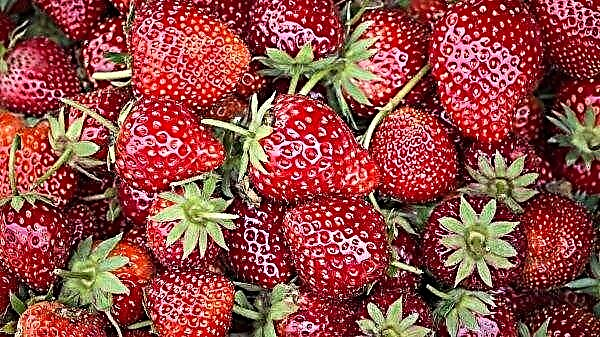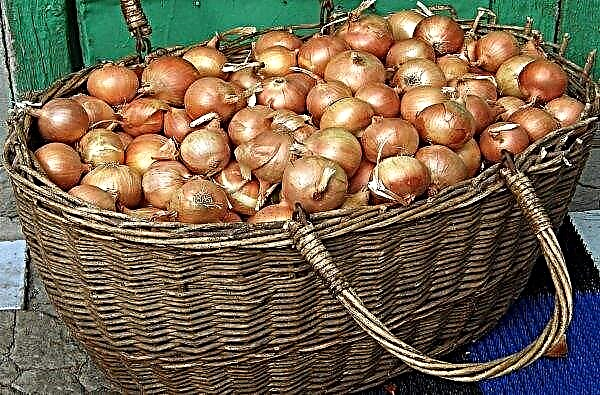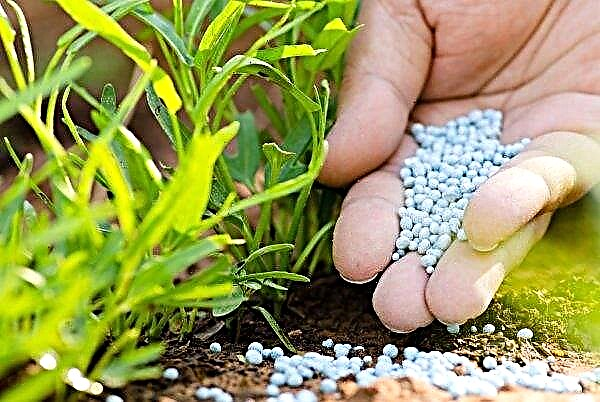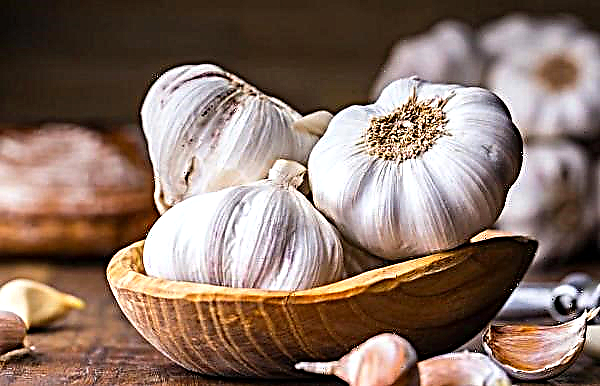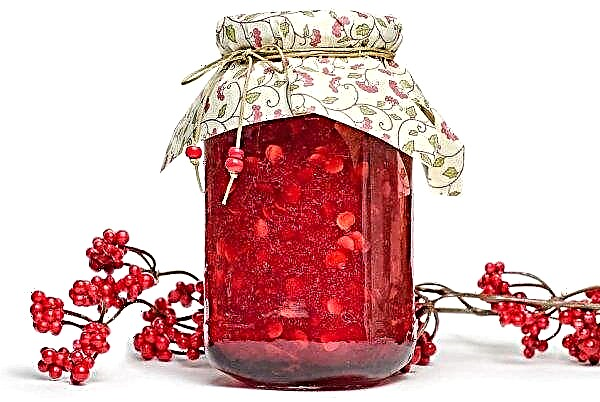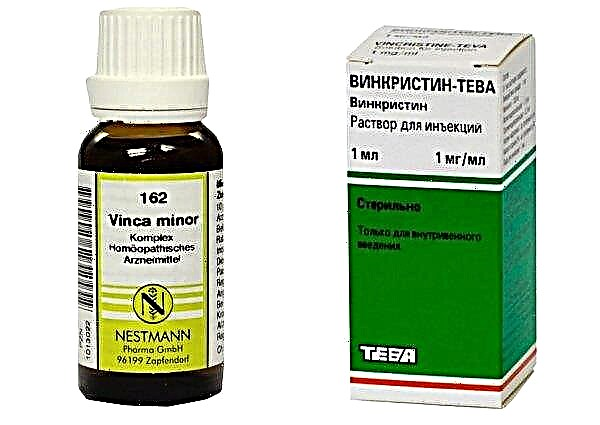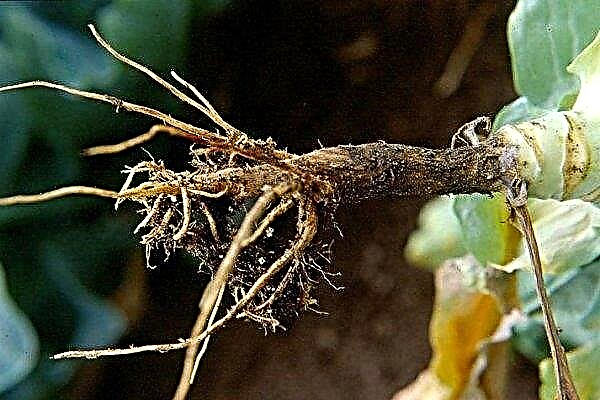Spathiphyllum, or Feminine happiness refers to unpretentious plants. However, with errors during planting and care, he may begin to hurt, refuse to bloom. One of the main criteria for successful flower cultivation is proper soil selection. What soil is suitable for spathiphyllum, you will learn from our material.
Basic rules for the care of spathiphyllum
Spathiphyllum is a warm and photophilous culture. She loves moisture, high humidity, does not tolerate drafts and sudden jumps in temperature. Caring for her is simple.
For successful growth, development and flowering, spathiphyllum needs to create a certain microclimate. He needs good, diffused lighting, shaded from direct sunlight. The best location is the north and east window sills.
Strong immunity develops in a flower when living in a room where in summer the air temperature is maintained at + 23 ... + 25 ° С, and in winter - not lower than + 15 ... + 18 ° С.Did you know? The name of the flower comes from 2 words from the Greek language: "spata" - «cover» and phillum - «sheet». So it was called because of the interesting form of inflorescence, which is covered with one petal, like a bedspread.
This indoor culture likes high humidity - 50–70%.
The room where spathiphyllum grows needs to be ventilated more often to ensure regular access to fresh air. But at this time it is necessary to control so that the flower does not fall under the action of air currents. Drafts are harmful to him.

Water spathiphyllum from spring to autumn should be plentiful, 2-3 times a week. Watering is carried out at the time of drying of the upper soil layer. In winter, hydration is reduced to 1-2 times a week. In summer, spraying is important. They need to be produced 1-2 times a day.
Regular flowering and stable growth will require regular fertilizer application. In the flowering phase they are produced 2 times a month, in the dormant period - 1 time per month.
Every year, in the spring, before the flower reaches 5 years of age, the spathiphyllum needs to be transplanted. Do it by transshipment method. After he turns 5 years old, a transplant is performed as necessary. You can simply update the topsoil.
Formative pruning is not necessary for spathiphyllum. It is only necessary to timely remove dried leaves and faded inflorescences.
Important! Spathiphyllum should not be grown in a house where small children, pets and allergies live - its organs contain toxic substances.
Suitable composition and soil requirements
Spathiphyllum puts forward the following requirements in the ground:
- nutritional value;
- good moisture and air permeability;
- slightly acid reaction;
- friability;
- ease.
Ideally, the mixture should consist of the following components:
How to choose the finished soil
The soil mixture can be purchased ready-made in a specialized store. For spathiphyllum, the soil is suitable for aroid or for flowering tropical plants. Purchased soil has both advantages and disadvantages.
The advantages of using such a mixture is that you can immediately plant a plant in it. It does not require additional processing. A minus can be considered a slightly higher density than necessary.
When buying land in a store, you need to pay attention to such nuances indicated on the package:
- for what purposes is it used;
- what plants can be planted in it;
- structure;
- pH level
- manufacturer's tips for use.
The most famous producers of land intended for spathiphyllum are:
- "Vermion";
- Biomaster;
- "Agrosver".
How to improve purchased land
Many flower growers prefer to plant spathiphyllum in the purchased land, but with the addition of various ingredients that can improve its composition and quality. Such additives should be no more than 10% of the volume of soil.
In order to make the substrate more loose, with better moisture and air permeability, they add to it:
- vermiculitis;
- perlite;
- brick chips;
- sand.
How to make the soil with your own hands at home
The soil for planting spathiphyllum can be done with your own hands. Thus, it is possible to obtain an optimal substrate composition for growing this particular house culture.

There are several land preparation options. We bring to your attention one of the most common.
Components and Proportions
To prepare the mixture you need to combine in equal proportions:
- sheet earth;
- peat;
- coarse sand (broken crumb of brick);
- charcoal;
- humus.
Step-by-step instruction
Making the mixture is quite simple:
- Put the right amount of components in a large container.
- To stir thoroughly.
- Feed the earth with superphosphate.
- For better friability, water and air permeability, coconut fiber can be mixed.
Important! When working with perlite, it is necessary to protect the hands with gloves, and the nose and mouth with a respirator. If you inhale microparticles of this substance, a person may have health problems.
Preparation for use and soil laying technology
Before planting the flower, it is necessary to process the pot, substrate and drainage. The pot is washed with soap, poured with boiling water and allowed to dry. Landing in a wet container is strictly prohibited. The soil is disinfected.

There are 4 ways to do this:
- Pour potassium permanganate solution (1%).
- Anneal in the oven or microwave at a temperature of +90 ... + 100 ° С.
- Boil in a large container: pour 1/2 or 1/3 of water into it, put a colander covered with a cloth on top, pour in the ground, cover with a lid. The earth should be kept above boiling water for 20-30 minutes.
- Freeze twice.
Prepared soil is laid with hands, a small scoop or spatula in the following sequence:
- Lay on the bottom of the pot, in which there must be drainage holes, drainage with a layer of 2 cm.
- Fill the container 2/3 with soil substrate.
- Set the spathiphyllum in the center, spreading the roots.
- Pour the remaining soil so that 1-3 cm remain from the edge of the pot.
- Tamp.
- To water.
- If the soil is donkey, sprinkle it to the desired height.

Signs of improper soil
If the soil is chosen inappropriate, then this will affect the decorativeness and development of the plant.
The fact that the soil does not fit the spathiphyllum is indicated by the following signs:
- yellow or brown spots appeared on the leaves;
- the leaves dry and fall off;
- harmful insects started;
- flowering is absent or delayed;
- flowering occurs in small inflorescences;
- the roots are damaged.
Thus, spathiphyllum when grown at home does not require special conditions and a lot of attention to yourself. In order to achieve maximum decorativeness and not have problems when growing Feminine happiness, it must be planted in the right land. In which soil to plant spathiphyllum - purchased or home-made - it is up to the owner. The main thing is that it is nutritious, loose, light and slightly acidic.Did you know? Abundantly blooming spathiphyllum can retain its decorative appearance in cut form for up to 3 months.

